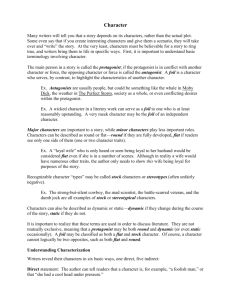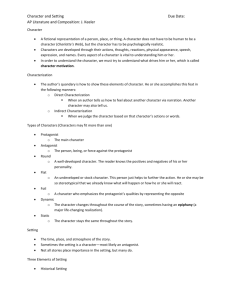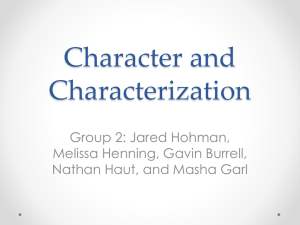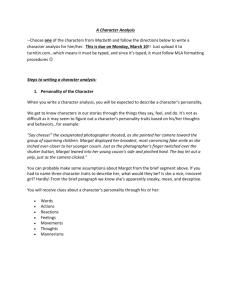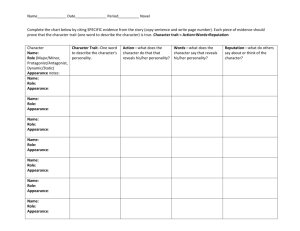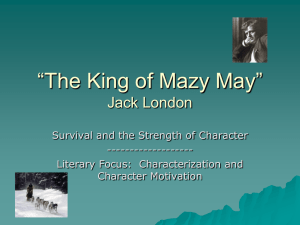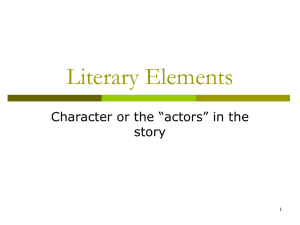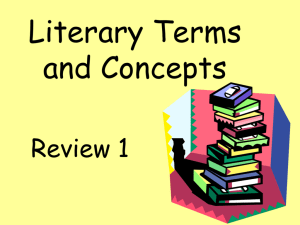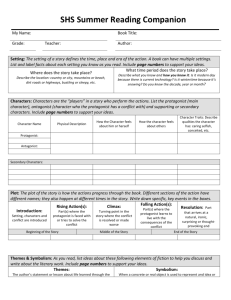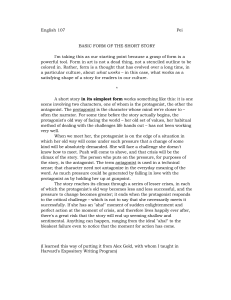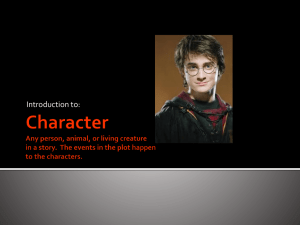Character
advertisement
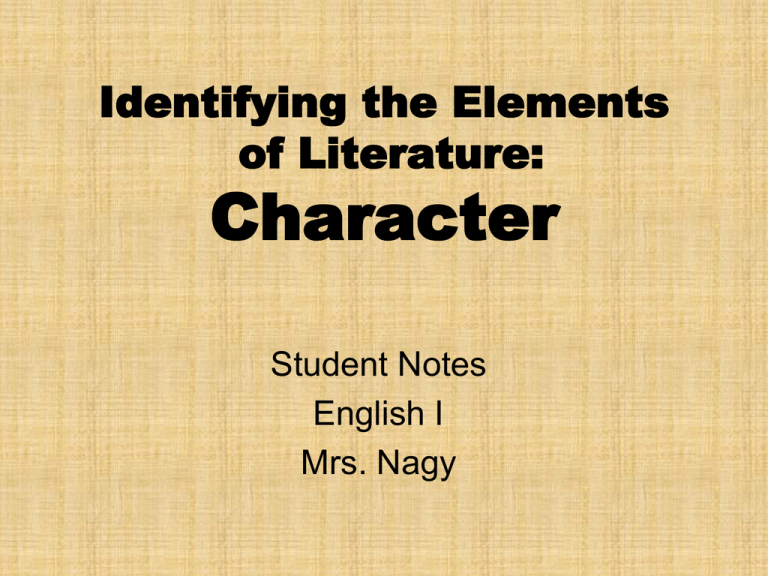
Identifying the Elements of Literature: Character Student Notes English I Mrs. Nagy Character (definition) • A character is a person or sometimes an animal or other being in a story (short story, novel, play, poem, movie, etc.). Types of Characters • • • • • • • Round Flat Dymamic Static Foil Protagonist Antagonist Types of Characters Defined • Round Character - a round character is fully developed, meaning we know lots about the character; readers may even be able to anticipate the actions of a round character if the characterization is well done and consistent. • Flat Character - we know very little about a flat character; flat characters are not meant to serve as main characters. They serve as necessary elements in plot or as elements of the setting. Types of Characters Defined • Dynamic Character - a dynamic character is one who changes by the end of the story, learning something that changes him or her in a permanent way. • Static Character - static characters do not change; they are the same person at the end of the story as they were at the beginning. Types of Characters Defined • Foil Character - a foil character is in most ways opposite to the main character. The purpose of the foil character is to emphasize the traits of the main character by contrast. • Protagonist - the main character of the story or the character you are “rooting for” to succeed (meet the goal or solve the conflict). The protagonist is not always a “nice guy” or hero. • Antagonist - the force that works against the protagonist; the antagonist does not have to be a person (remember from conflict that forces of nature, a society, or even a flaw of the protagonist can be an antagonist). Types of Characters Grouped • Typically your main character will be… – The protagonist – Round – Dynamic • Other major characters will be… – – – – Foils The antagonist Round Static • Minor characters will be… – Flat – Static Characterization • Definition - the process by which the author reveals the character’s personality or what the character is like, who he or she is. Types of Characterization • Direct Characterization – the author directly states or tells the reader what the characters are like. • Example – The girl was very shy, but also very beautiful, and therefore, always attracting attention. • Indirect Characterization – the author does not directly state what the character is like and the reader has to decode a series of clues that reveal the character’s personality traits. Indirect Characterization • How do we know what clues to look for? Remember SATDO! • S – What the character says • A – The character’s appearance or environment • T – The character’s thoughts • D – What the character does • O – What other characters say about the character How do we use SATDO? • As you read more and more complex texts, you will use SATDO clues to develop a deeper understanding of characters. • If you actually pause to consider each of these things about a character, you can learn quite a bit about them! • If you are asked a question in which you have to identify examples of character traits, SATDO is very helpful.
